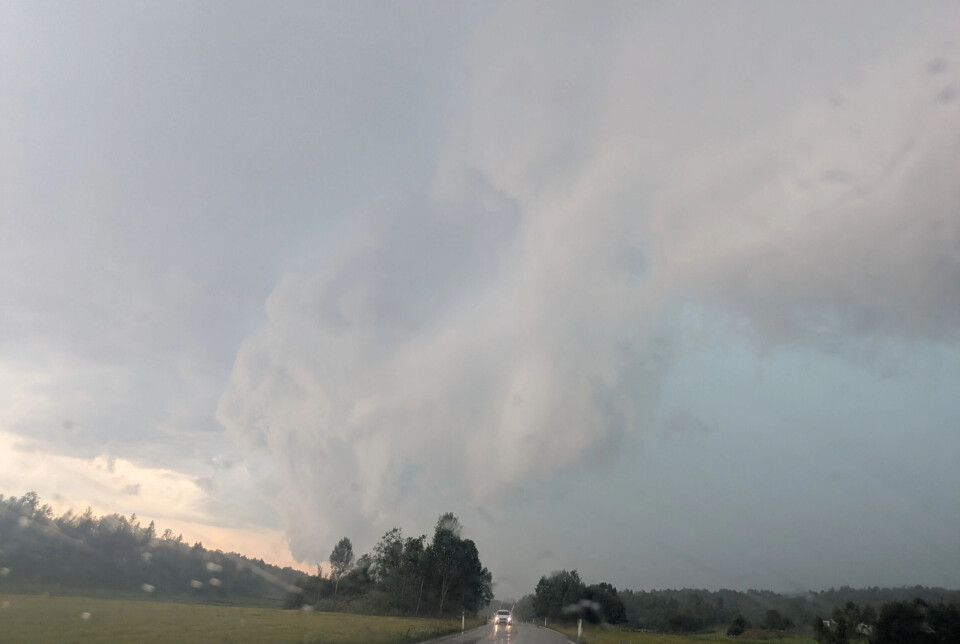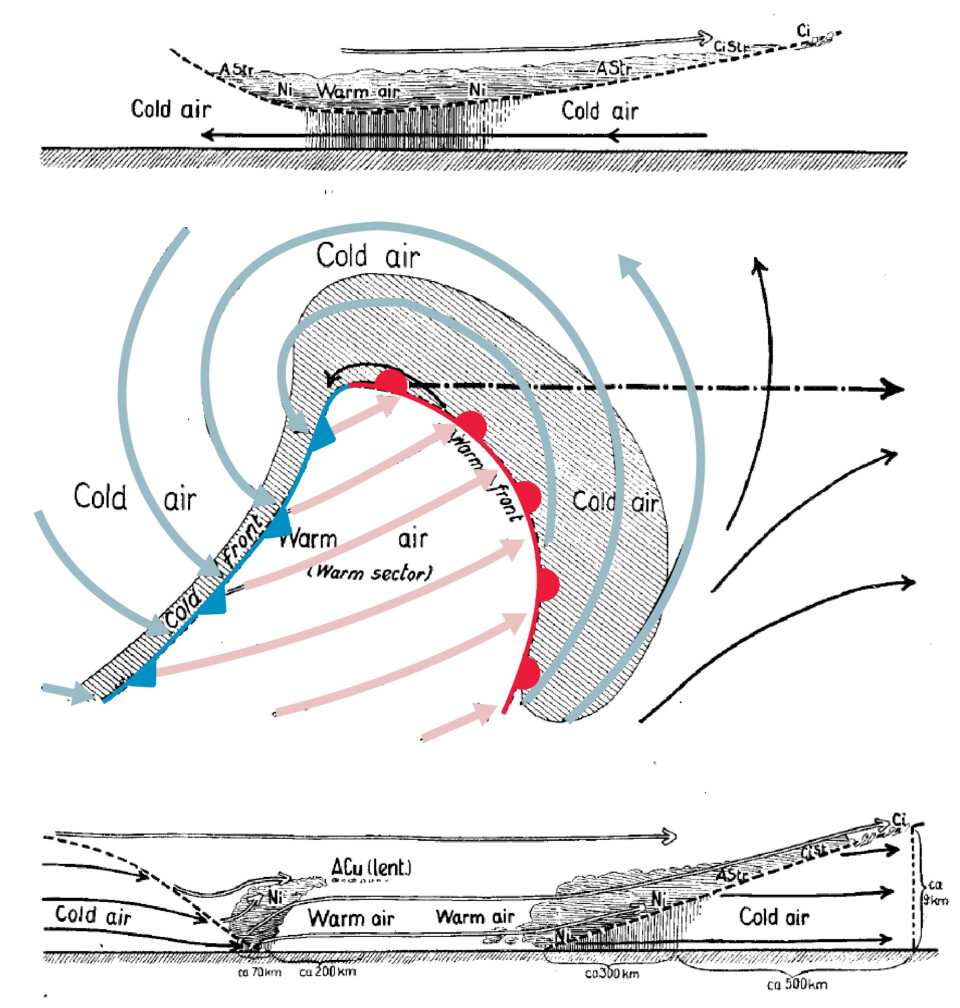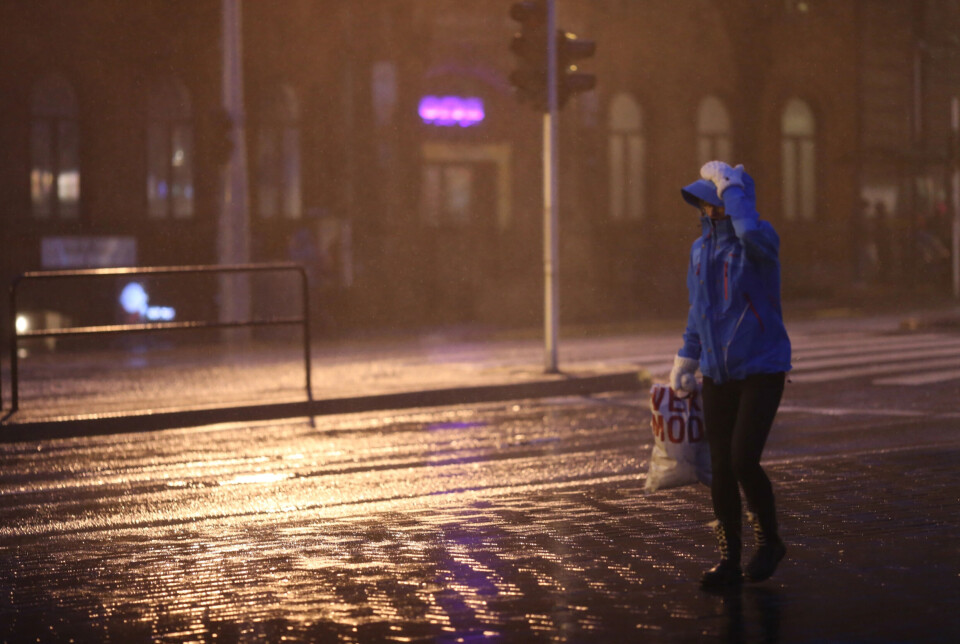THIS CONTENT IS BROUGHT TO YOU BY the University of Bergen - read more
“Why doesn't it rain more?” asks researcher
Climate change enhances extreme rains more than the ordinary drizzle.

“We had to stop the car, because we couldn't see the road. It was pouring down, with hail, and lightning strikes every three seconds,” says Kjersti Konstali.
The rain researcher recalls a car trip between the Norwegian cities of Tønsberg and Drammen in mid-July.
In a recent study, she and colleagues have looked at what makes extremely heavy rainfall not just more extreme, but even more extreme than other rainfall.
The most extreme rain increases most extremely
Higher air temperature makes it rain more. That extreme precipitation increases more than weaker rainfall is well known. Periods with extreme amounts of rainfall become relatively wetter than the average rainfall over days and years.

What made Konstali and her colleagues wonder was that not all extreme precipitation increases equally. Not all weather phenomena are affected equally by climate change. The most extreme rain is amplified the most.
What could be the reason for this?
The researchers examined different weather types associated with rainfall: extratropical cyclones, weather fronts, and atmospheric rivers, as well as combinations of these phenomena.
Using a climate model, they studied the weather during six-hour periods of extreme precipitation in the years 1950 to 2100.
“Extreme precipitation connected to fronts increases significantly. I was surprised to see how clear the difference between the different types of weather were,” says Konstali.
Heavy rain that occurs without nearby fronts will not lead to more precipitation in the future; in some regions, it may even result in less.
Moist air is not enough
Much depends on temperature. For every degree the air temperature increases, saturated air will contain seven per cent more water vapour.
This is a simple law of nature, letting the air shed seven per cent more water. In theory, with one degree of warming, we can expect seven per cent more precipitation when it rains.
When it rains. That is, if the available water is released and falls down.
The air must also rise
For raindrops to form, having moisture in the air is only a first step. The air must also rise and be cooled sufficiently for water vapour to condense into water. Such ascent occurs in cyclones and fronts, or as the air approaches mountains.
The final result depends on where low-pressure systems and fronts are located, how strong they are, and whether the rising air is cooled enough. In this way, weather systems moderate the simple law of nature calling for seven per cent more precipitation.
No simple law of nature can tell how this will play out in a warmer world.

Less rain than the temperature indicates
“Why doesn't it rain more?” Konstali asks rhetorically.
Extreme precipitation that occurs in the absence of fronts increases less than the seven per cent per degree predicted by the warming of the air – perhaps only a few per cent, or not at all.
“Fronts are the only weather type that can fully use the extra moisture. The other weather types don't manage to squeeze the water out of the air,” she says.
Regardless of weather type, warmer air will contain more water vapour. But the lifting in extratropical cyclones and atmospheric rivers does not increase enough to convert all the extra vapour into water.
Only in fronts did Konstali and the other researchers find such an increase in rainfall.
Fronts are enhanced by their own rain
Fronts are sharp boundaries between warm and cold air masses. Where warm and cold air meet, the warm air rises above the cold, and clouds and precipitation form.
As vapour condenses into water, heat is released. The air in and around the clouds becomes warmer because droplets form. This reinforces the temperature difference between the warm and cold sides of the front – the front's defining characteristic.
The air around the front is in constant motion, and in contrast to the other weather phenomena, all extra available water vapour is converted into water.
Fronts are connected to low-pressure systems. So far, there is no consensus as to whether climate change will make extratropical cyclones more or less intense. But strong fronts get stronger as it rains, and stronger fronts lead to even more rain. The effect is self-reinforcing.
Extreme weather with fronts already generates the strongest precipitation in areas outside the tropics. That frontal precipitation increases the most therefore implies that it is the most extreme rainfall that is most affected by global warming.

High season coming up
The wettest days occur when cyclones march in with fronts and an atmospheric river – a powerful trio now and in the future. But of the three, the front accounts for the largest increase.
Although autumn and winter are the high season for prolonged and widespread rainfall, seemingly isolated summer showers can also be connected to fronts.
The thunderstorm Konstali experienced on her afternoon drive in July was not a local phenomenon. The air was warm and unstable over large parts of southern Norway. When a front system gave it an extra lift, the sky erupted, not just in southern and eastern Norway, but in western Norway, over Skagerrak, and in southern Sweden.
“The car is the safest place to sit in a thunderstorm. But we had to stop,” she says.
This time the downpour was intense but short-lived. After five or ten minutes, the worst had passed, and they could start the car and head back onto the road.
Reference:
Konstali et al. Atmospheric Fronts Drive Future Changes in Extratropical Extreme Precipitation, Geophysical Research Letters, vol. 52, 2025. DOI: 10.1029/2025GL116032

This content is paid for and presented by the University of Bergen
This content is created by the University of Bergen's communication staff, who use this platform to communicate science and share results from research with the public. The University of Bergen is one of more than 80 owners of ScienceNorway.no. Read more here.
More content from the University of Bergen:
-
The West influenced the Marshall Islands: "They ended up creating more inequality"
-
Banned gases reveal the age of water
-
Researchers discovered extreme hot springs under the Arctic
-
Tiny particles unlock vinegar’s hidden healing potential
-
Uncovering the hidden female influence in medieval literature
-
Surprising discovery in an Arctic lake during the last Ice Age





































